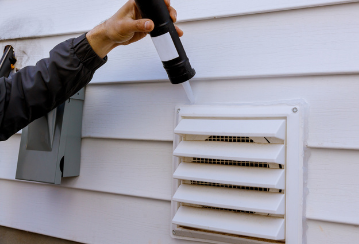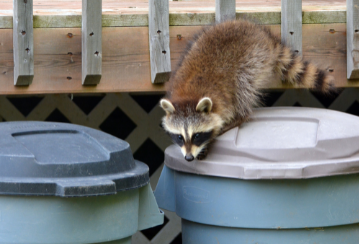News and Updates
Prevent pests from invading your cottage
Your cottage is your home away from home, your own personal vacation getaway. However, there are many different critters who would also like to enjoy your cottage, including rodents, insects and larger mammals.
Pest infestations can cause a considerable amount of damage to your cottage and may present a health hazard to you and your family.
Here are a few tips to keep your cottage pest-free.
1. Don’t feed the wildlife
Although it can be cute to watch a little squirrel nibble on a nut, feeding wildlife encourages them to return to your property and potentially find a way into your cottage. Garbage cans are an all-you-can-eat buffet for some critters, so it’s important to secure your garbage can lids. Try placing a heavy object, like a rock, on your garbage can lid or securing the lid with locks, ropes or bungee cords. You may also want to avoid putting in any particularly tempting garbage in an outdoor garbage can until collection day.
When you leave your cottage, eliminate all sources of food within your property by sealing any food in reusable food containers, thoroughly cleaning your counters and floors and securing any grass seed in sealed storage bins (grass seed is an appetizing meal for a mouse!).
2. Seal off all possible entry routes
 The most effective way to prevent an infestation is to prevent any pest from entering your cottage in the first place. Thoroughly inspect your home for any openings, especially around pipes, dryer vents and gas lines and seal them with caulking – remember, mice can fit through a hole the size of a dime! If there are larger areas around pipes that are hard to seal, you can use a copper pad to fill in the gap, as mice won’t chew through it.
The most effective way to prevent an infestation is to prevent any pest from entering your cottage in the first place. Thoroughly inspect your home for any openings, especially around pipes, dryer vents and gas lines and seal them with caulking – remember, mice can fit through a hole the size of a dime! If there are larger areas around pipes that are hard to seal, you can use a copper pad to fill in the gap, as mice won’t chew through it.
Your seasonal insurance policy likely has a requirement that you check your property regularly to maintain coverage, so be sure to visit and inspect your cottage often. To ensure your cottage is well-defended, have a pest professional inspect your cottage annually as they can detect an early infestation and know where to check for entry routes.
3. Clear the area next to your cottage
Clutter around your cottage invites pests to make a home and eventually find a way in. Don’t let debris like dead leaves or sticks pile up against your siding. If you have a wood pile, move it at least 30 feet away from your cottage as it can be home to carpenter ants, mice and other critters (this can also help protect your cottage from a spreading wildfire). Trim any tree branches that extend to your roof so that squirrels and carpenter ants can’t use the tree as a bridge to enter your roof and attic.
4. Watch out for too much moisture
High humidity and moisture attract carpenter ants and other pests and can cause structural damage. Keep an eye on plumbing areas and sinks that tend to be dark and damp. Use a dehumidifier if you need to and watch for leaks in your gutters, floors, roof and deck.
If despite your best-efforts pests still find their way into your cottage and cause property damage, you’ll want to check with your seasonal insurance policy to see if the damage is covered. Generally, pest damage is considered preventable damage if it could have been prevented by performing reasonable regular maintenance. However, if there is unexpected damage that you could not have prevented, such as storm damage that allows pests to enter your home, it may be covered. Talk to your insurance broker if you have questions about your coverage.
If you’re interested in getting a quote for seasonal property insurance, call an OTIP Insurance broker at 1-866-561-5559. If you have questions about your current OTIP seasonal property coverage, contact us at 1-800-267-6847.





